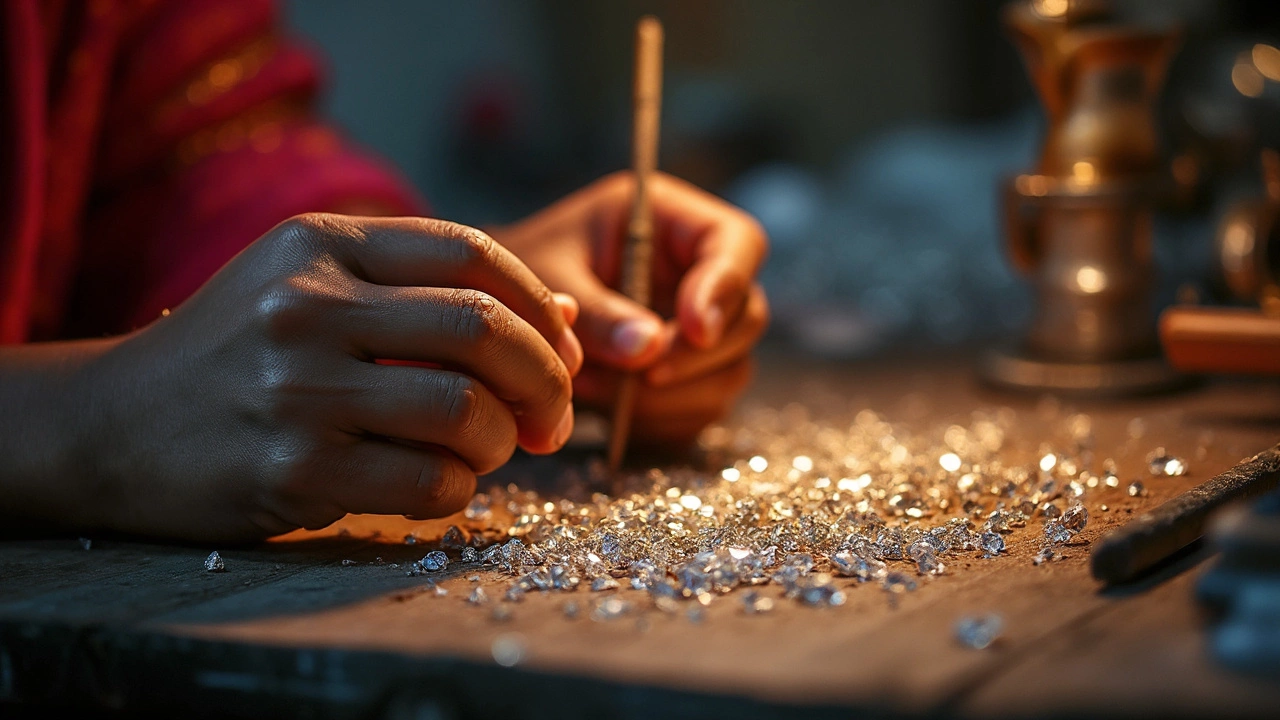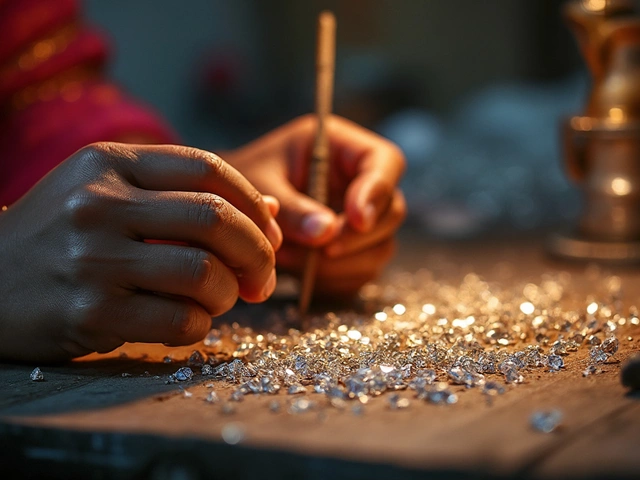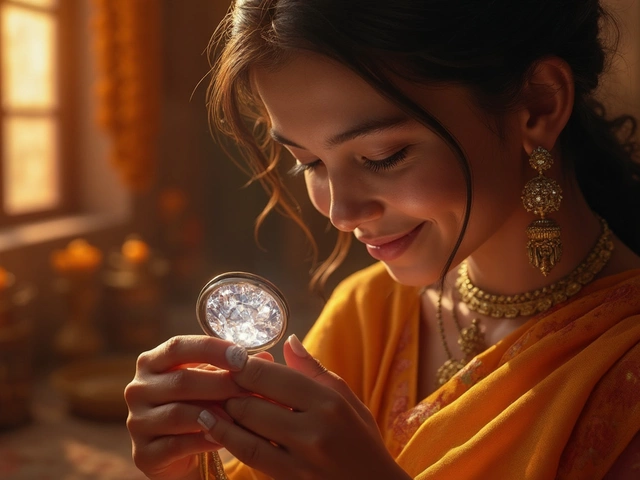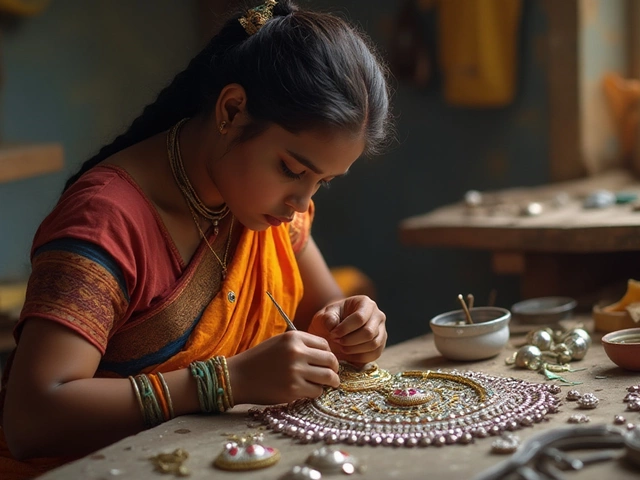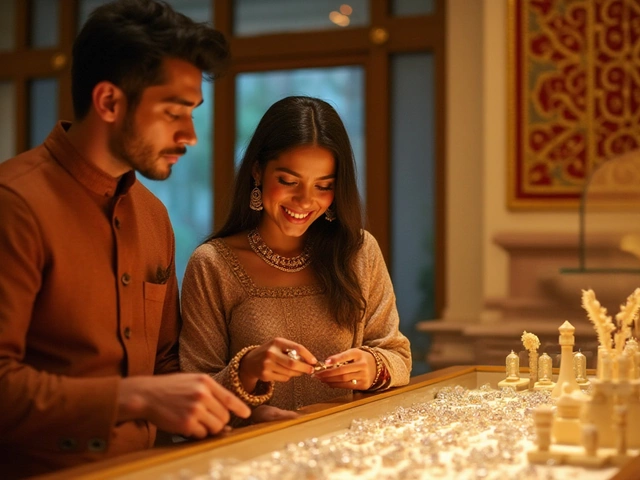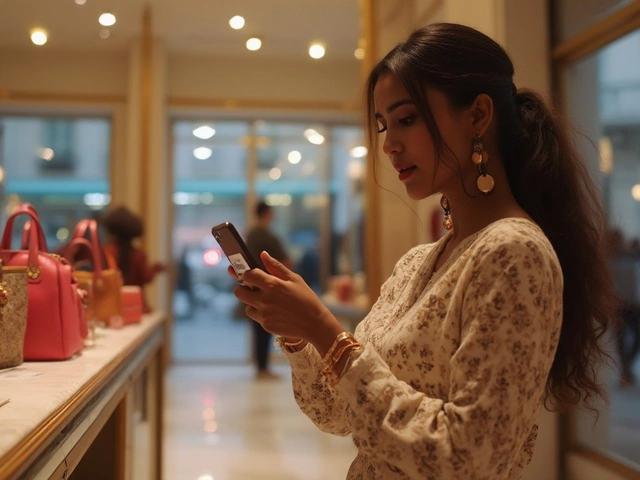Diamonds – Your Quick Guide to Buying, Spotting & Caring
If you’re thinking about adding a diamond to your collection, you probably have a few questions: How do I know it’s real? What should I look for before I pay? And once I have it, how do I keep it sparkling? This guide gives you straight‑forward answers without any jargon.
How to Choose a Real Diamond
First, check the four Cs – cut, color, clarity, and carat. You don’t need to memorize every grade, but you should know what matters to you. A well‑cut diamond reflects light beautifully, while color and clarity affect how clear the stone looks. If you’re on a budget, prioritize cut; a good cut can make a lower‑carat stone appear larger.
Look for a reliable hallmark. In India, a real diamond will often come with a certification from GIA, IGI, or a similar lab. The certificate lists the exact specifications and guarantees that the stone matches the description. If a seller can’t provide one, walk away.
Do a quick home test: place the diamond over a newspaper. If you can read the print clearly through the stone, it’s likely a diamond because of its high refraction. This isn’t foolproof, but it’s a handy first check.
Avoid the magnet test. Diamonds aren’t magnetic, but many cheap plated pieces aren’t either, so the test won’t confirm authenticity. Instead, pay attention to the setting. A solid metal band with a proper clasp usually indicates a higher‑quality piece.
Keeping Your Diamonds Shining
Cleaning a diamond is easier than you think. A soft toothbrush, warm water, and a few drops of mild dish soap do the trick. Gently scrub each facet, rinse, and pat dry with a lint‑free cloth. Do this once a week if you wear the piece daily.
Store diamonds separately. When diamonds rub against other jewelry, tiny scratches can appear over time. Use a soft pouch or individual compartment in a jewelry box.
Take off your diamonds before any heavy activity – gardening, cleaning, or exercising. Even though diamonds are hard, they can still chip if they hit a hard surface at the right angle.
Schedule a professional check‑up once a year. A jeweller can tighten settings, replace missing prongs, and polish the metal. It’s a small cost that saves you from bigger repairs later.
Lastly, buy from a trusted source. RH Jewellers offers certified diamonds, a transparent return policy, and a lifetime warranty on setting work. When you shop with us, you get a clear certificate, expert advice, and peace of mind that your sparkle stays brilliant.
Now you know the basics: check the four Cs, demand a certification, do a simple home test, and keep your stone clean and safe. With these steps, you’ll feel confident buying a diamond that truly shines for years to come.
Why Gujarat Is Famous for Diamonds: The Real Story Behind India's Shining Stones
Gujarat has a reputation for being the world’s diamond hub, with Surat handling over 90% of the world’s diamond cutting and polishing. This article explores why diamonds from Gujarat are so well-known, how the local industry grew, and what it means for anyone buying diamond rings in India. You'll also find interesting facts about the people, their craftsmanship, and tips to make smart choices when picking out that perfect diamond piece. Dive into what makes Gujarat’s diamond trade tick and much more.
The Global Journey of Diamonds: India's Role in Crafting Brilliance
India plays a central role in the diamond cutting industry, with a majority of the world's diamonds being processed there. This article explores why India has become a leader in diamond craftsmanship, while also highlighting other key players around the globe. It discusses the skills and traditions that make India unique, as well as the global nature of the diamond supply chain. Readers can expect to gain a deeper understanding of how diamonds journey from raw stones to sparkling jewels.
